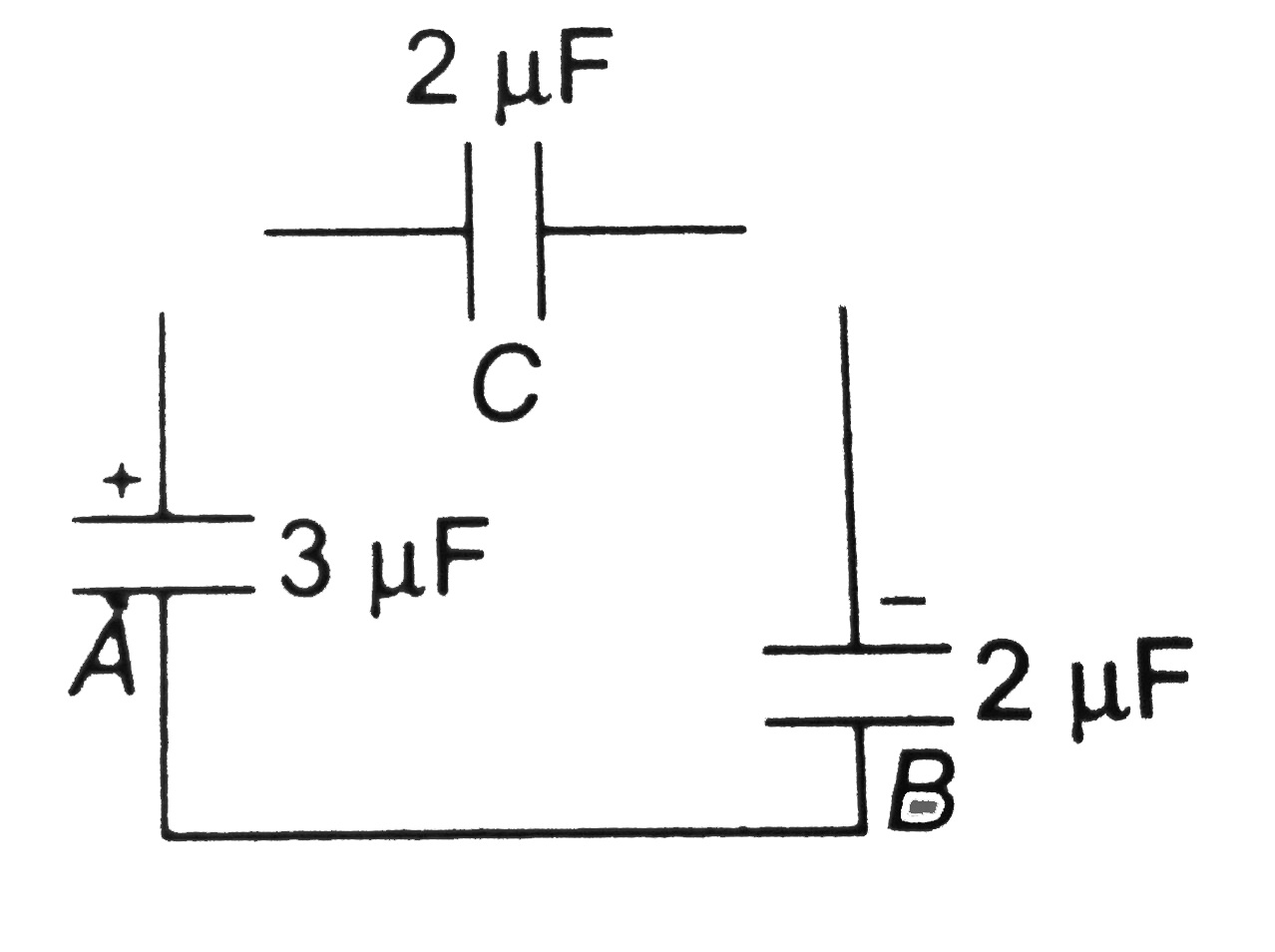If the two plates of the charged capacitor are connected by a wire, then
potential will becomes infinte
charge will becomes infinite
capacitor will get discharged
charge will becomes double that of earlier one
The correct Answer is:C
To solve the question regarding what happens when the two plates of a charged capacitor are connected by a wire, we can follow these steps:
1. Understanding the Initial Condition:
- A capacitor consists of two plates, one positively charged (+Q) and the other negatively charged (-Q). The potential difference (V) between the plates is given by the formula:
V=QC
where Q is the charge and C is the capacitance.
2. Connecting the Plates with a Wire:
- When the two plates of the charged capacitor are connected by a wire, they are effectively at the same electrical potential. This means that the potential difference (V) between the two plates becomes zero:
V=0
3. Implications of Zero Potential Difference:
- Since the potential difference is zero, we can use the relationship V=QC to deduce the charge on the plates. If V=0, then:
Q=0×C=0
This indicates that the charge on both plates will become zero.
4. Conclusion:
- By connecting the plates with a wire, the capacitor will discharge completely, and the charge on both plates will become zero. Therefore, the correct answer is that the capacitor will get discharged.
Final Answer:
The capacitor will get discharged (Option 3).
- A capacitor consists of two plates, one positively charged (+Q) and the other negatively charged (-Q). The potential difference (V) between the plates is given by the formula:
V=QC
where Q is the charge and C is the capacitance.
- When the two plates of the charged capacitor are connected by a wire, they are effectively at the same electrical potential. This means that the potential difference (V) between the two plates becomes zero:
V=0
- Since the potential difference is zero, we can use the relationship V=QC to deduce the charge on the plates. If V=0, then:
Q=0×C=0
This indicates that the charge on both plates will become zero.
- By connecting the plates with a wire, the capacitor will discharge completely, and the charge on both plates will become zero. Therefore, the correct answer is that the capacitor will get discharged.
The capacitor will get discharged (Option 3).
Topper's Solved these Questions
Similar Questions
Knowledge Check
- Question 1 - Select One
STATEMENT-1 : When the plates of a charged capacitor are connected to a resistor, a current starts flowing in the resistor.
and
STATEMENT-2 : A charged capacitor acts as a battery of steady emf.AStatement-1 is True, Statement-2 is True, Statement-2 is a correct explanation for Statement-1BStatement-1 is True, Statement-2 is True, Statement-2 is NOT a correct explanation for Statement-1CStatement-1 is True, Statement-2 is TrueDStatement-1 is False , Statement-2 is True - Question 2 - Select One
The plates of a charged capacitor are connected to a voltmeter. If the distance between the plates is increased , then the reading of the voltmeter
AdecreaseBincreaseCremains same.Dreduces to zero - Question 3 - Select One
A capacitor having capacity of 2μF is charged to 200V and then the plates of the capacitor are connected to a resistance wire. The heat produced in joule will be
A2×10−2B4×10−2C4×104D4×1010
(i) The plates of a capacitor, initially connected to a battery for a long time, are disconnected from it now. How is the charge on the capacitor affected?
(ii) The plates of a charged capacitor are connected to each other by a conducting wire. What happens to the charge after connection?View SolutionTwo capacitors A and B with capacities 3μF and 2μF are charged to a potential difference of 100V and 180V, respectively. The plates of the capacitors are connected as show in figure with one wire of each capacitor free. The upper plate of A is positive and that of B is negastive. An uncharged 2μF capcitor C with lead wires falls on the free ends to complete the circuit. Calculate
a. the final charge on the three capacitors.
b. the amount of electrostatic energy stored in the system before and after completion of the circuit.
 View Solution
View SolutionTwo capacitors A and B with capacities 3μF and 2μF are charged to a potential differece of 100V and 180V, respectively. The plates ot the capacitors are connected as shown in, with one wire free from each capacitor. The upper plate of A is positive and that of B is negative An uncharged 2μF capacitor C with lead wires falls on the free ends to complete the circuit.
i. Calculate the final charge on the three capacitors,
ii. Find the amount of electrostatic energy stored in the system before and after the completion of the circuit.
 . View Solution
. View SolutionStatement-1: If the plates of a capacitor are connected through a conducting wire, then its capacitance becomes infinite.
Statement-2: The capacitors cannot be charged.View SolutionThe plates of charged condenser are connected by a conducting wire. The quantity of heat produced in the wire is
View Solution

